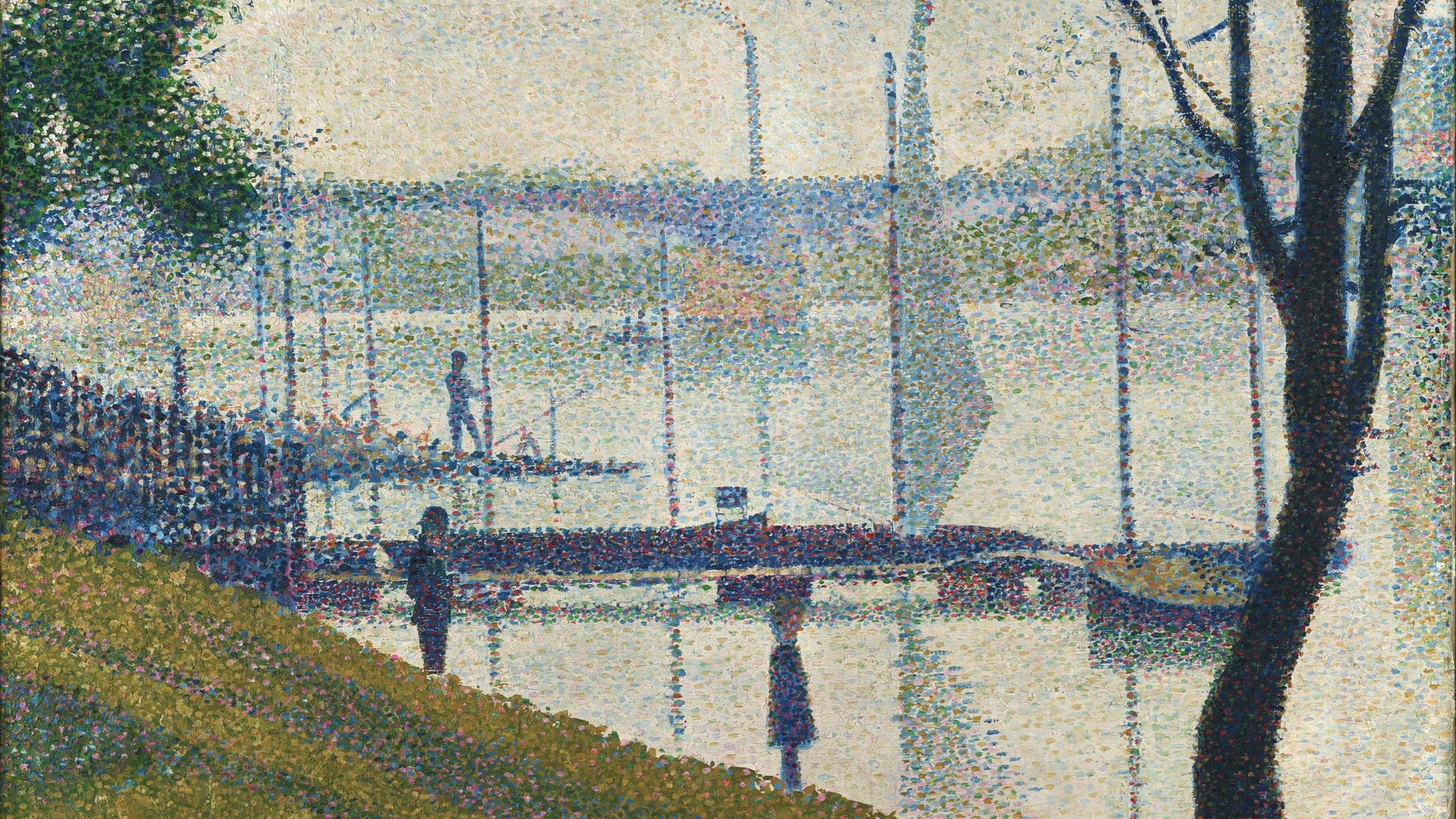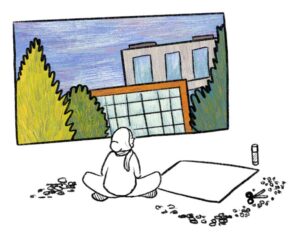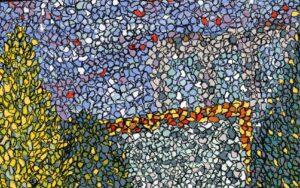- A sheet of Paper
- Magazines, newspaper and scrap paper
- Scissors (optional)
- Glue stick

Pointilist Confetti Inspired by Georges Seurat
Family Activities
Bridge at Courbevoie is a painting by artist Georges Seurat (1859 – 1891). Seurat was a painter working in Paris at the end of the 19th century. He enjoyed painting places like beaches where people would go to relax and enjoy themselves. He helped start a new trend in painting called Pointillism.
Pointillism means a painting made out of lots of tiny dots or points of colour. If you look closely at this painting you will see that everything in the picture is made up of tiny dots. Seurat wanted colours painted side by side to mix in our eye when we look at the pictures, this is called Optical Mixing. Seurat believed that this would make his pictures brighter and more vibrant.
Materials

A Closer Look
With someone in your household use the questions below to take a deeper look at the painting and have a discussion about it. These questions are to help you look more closely at the painting, there are no right or wrong answers.
- Do you like this painting? If so, what do you like about it? Is there anything that you don’t like?
- What do you see? Take a moment to notice everything you can see and describe it.
- What colour is the grass? Look closer, until you can see the dots.
- How many different colours can you find in the grass?
- Look at the sky. If you were going to this place what would you wear?
- Look in the distance. What noises do you think you could hear in this place?
- Look at the water. If you were there what would it smell like?
- Ok, now count all the dots in the picture. Only joking! That would take so long!
Activity One: Colour Wheels
We’re going to make coloured confetti to make our pictures, we’re going to try and see how many colours we can create.

Step 1: Cut or tear all your paper into little pieces of confetti. Divide your confetti into different piles of colour.
Step 2: Make 3 piles of your red, yellow and blue confetti, these are your primary colours. Arrange these piles to make the start of your wheel, leaving spaces between each colour.
Step 3: Fill in the gaps between your primary colour piles with secondary colours of orange, purple and green. You can make these colours by mixing together primary colours.
How many colours can you make in your wheel by mixing different shades together?

Activity Two: Make a Confetti Landscape
Seurat wanted to make a world of colours with his dots. We are going to try to make the world around us out of coloured confetti.
Look out of the windows in your home.
- What can you see? Take the time to notice every detail.
- Look at the sky How many colours can you see?
- How many different shades of blue are there in the sky? How many greys?
- Are there any colours in the sky you weren’t expecting?
- Look at the landscape, the trees, the streets or the buildings. Are there colours here that you didn’t expect?
- How many millions of colours do you think you see just from one window?

Step One: Arrange your confetti to create the landscape you see out the window. Lay the confetti on your paper but don’t stick it down until you feel like it’s finished.
You can start with big bits of bright colour and add new colours as you notice them. Don’t worry about it being neat or perfect, when Seurat was making his first Pointillist images he took risks and tried something new, you can do the same thing!
Step Two: Once you are happy you have found all the colours you can stick your confetti landscape to the paper using glue.
Step back and look at your picture. Do your eyes mix the colours together?
Artwork: Millie Nice





